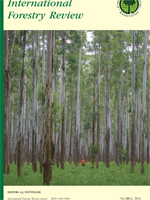We investigated the impact of population size on genetic diversity, inbreeding and mating system in small remnant stands of the Neotropical tree, Cariniana legalis, using microsatellite loci. All adult trees within three different size stands (4, 22 and 65 trees) were sampled, along with open-pollinated seeds. A number of impacts related to population size were evident. Allelic richness was significantly lower among progeny in the smallest fragment, as was outcrossing rate. Individual tree outcrossing rates were predominantly high, but several trees presented significant mating among relatives. The correlation of paternity within fruits was significantly higher than among fruits in all populations, indicating that the probability of full-sibs being produced is highest within fruits. Our results show that low population size can increase the rate of selfing in C. legalis and that open-pollinated seed from the largest populations may also include inbreeding from mating among relatives.
How to translate text using browser tools
1 December 2016
Several Small: How Inbreeding Affects Conservation of Cariniana legalis Mart. Kuntze (Lecythidaceae) the Brazilian Atlantic Forest's Largest Tree
E.V. Tambarussi,
D.H. Boshier,
R. Vencovsky,
M.L.M. Freitas,
O.J. Di-Dio,
A.M. Sebbenn
ACCESS THE FULL ARTICLE

International Forestry Review
Vol. 18 • No. 4
December 2016
Vol. 18 • No. 4
December 2016
Brazilian Atlantic Forest
conservation genetics
microsatellite markers
population genetics
tropical tree species




